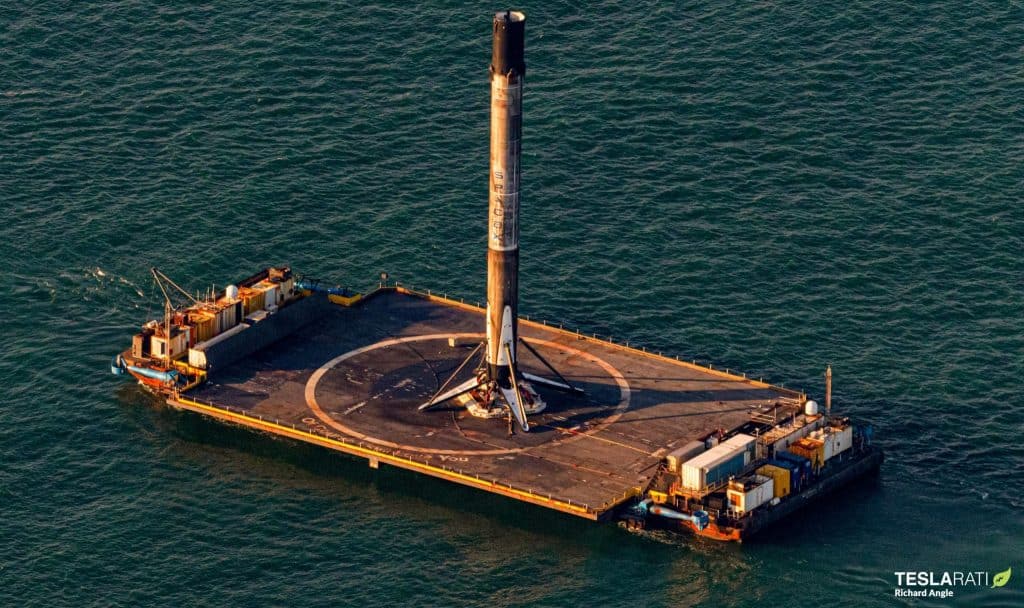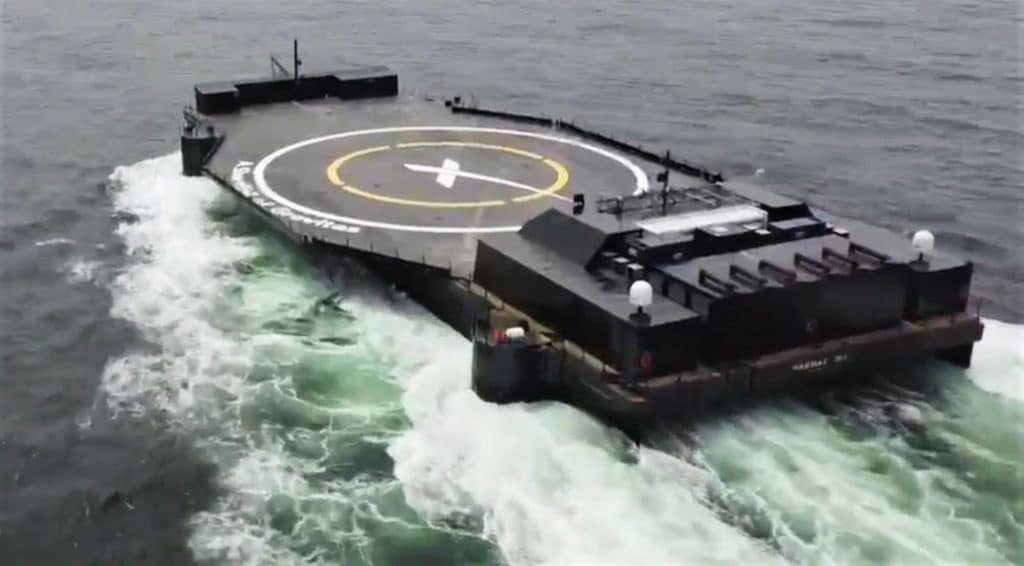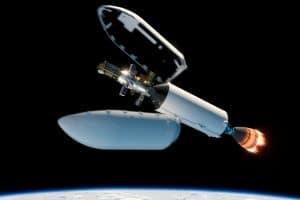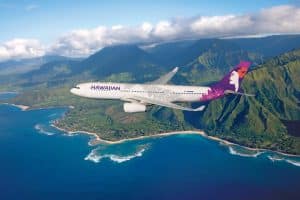CEO Elon Musk has released the first official video of A Shortfall of Gravitas (ASOG), the newest member of SpaceX’s fleet of ‘autonomous spaceport drone ships’.
Purely from a visual perspective, drone ship ASOG represents a substantial departure from older siblings Just Read The Instructions (JRTI) and Of Course I Still Love You (OCISLY). Whereas both JRTI and OCISLY expanded upon Marmac 300-series barges with rectangular wings and a variety of power generation and propulsion add-ons in a slew of tacked-on shipping containers, drone ship ASOG appears to be substantially refined. That process of gradual refinement is an integral part of SpaceX’s modus operandi and ASOG thus likely represents a culmination of years of lessons learned from 76 booster recovery attempts and 66 successful landings.
Perhaps even more significantly, Musk says that ASOG might by SpaceX’s first fully automated drone ship – potentially capable of propelling itself to and from recovery zones and securing landed Falcon boosters without hands-on human intervention.
Physically, drone ship ASOG appears to be a fair bit sleeker and more optimized than its siblings. On ASOG, the substantial amount of extra equipment required to turn a barge into a ‘drone ship’ has been packaged in a far sturdier, more permanent manner inside steel bunkers, whereas JRTI and OCISLY have generators, power supplies, computers, and communications equipment strewn about their decks in shipping containers.


On JRTI and OCISLY, the only real protection against the blast of a landing Falcon booster and the threat of damage from high seas smashing into equipment come from two angled steel deflectors. ASOG, on the other hand, looks like a battle-hardened tank with almost no identifiable equipment visible under black steel covers and shielding. ASOG appears to be built to tolerate extreme rocket blasts and high seas, in other words.
Curiously, ASOG’s angular landing deck is also significantly smaller and slightly narrower than the rectangular decks on JRTI and OCISLY. Additionally, the vast majority of ASOG’s extra equipment has been installed on the drone ship’s aft end, seemingly resulting in deck load distribution that is intentionally asymmetric.
That design decision could be connected to Musk’s indication that ASOG is SpaceX’s first truly autonomous drone ship. While JRTI and OCISLY are both capable of autonomously staying in one specific location after being towed out to sea and prepared by a team of technicians, ASOG may be able to travel several hundred miles out to sea, recover and secure a Falcon booster with its Octagrabber robot, and then return to Port Canaveral to offload the rocket without a single person boarding the drone ship.
In theory, if realized, drone ship ASOG’s full autonomy could easily save SpaceX $1M or more per booster recovery. Still, it remains to be seen if SpaceX is actually at a point where at-sea booster recovery can be truly automated as described above. A Shortfall of Gravitas is currently on track to arrive at Port Canaveral on Thursday evening, July 15th.





